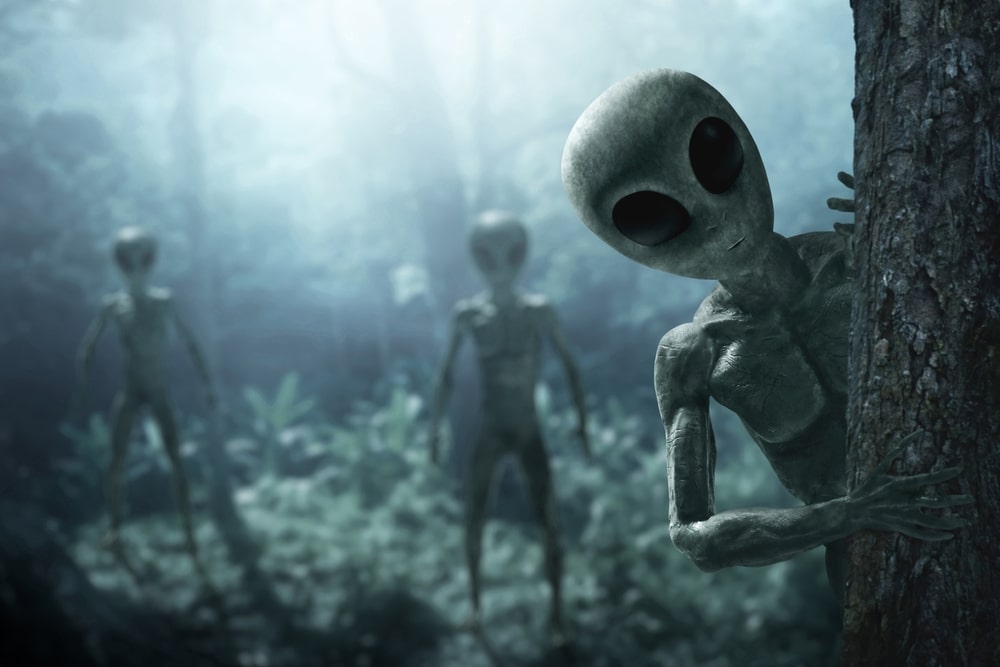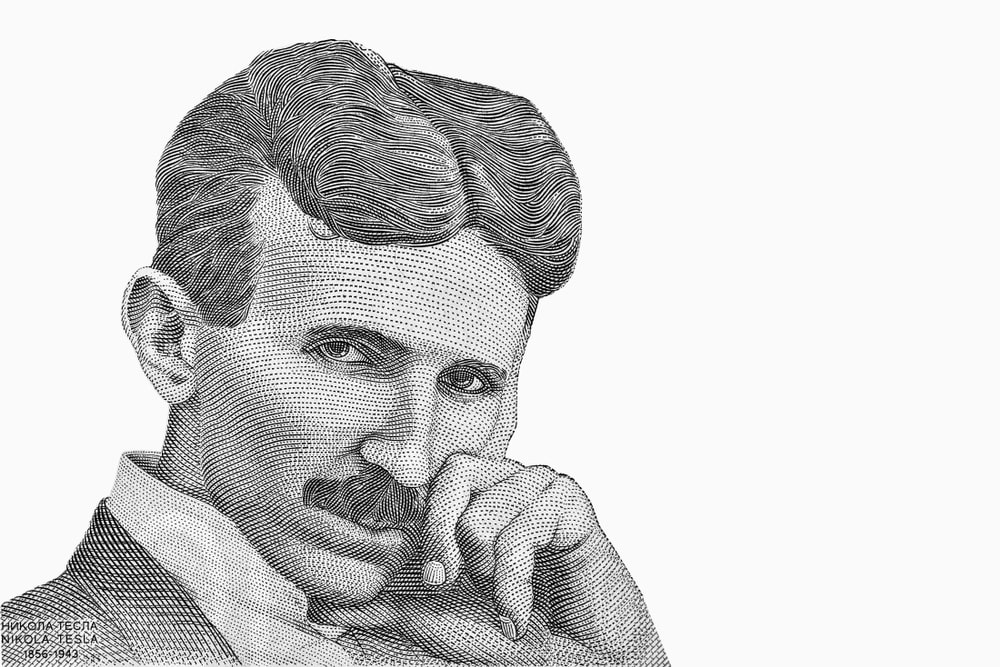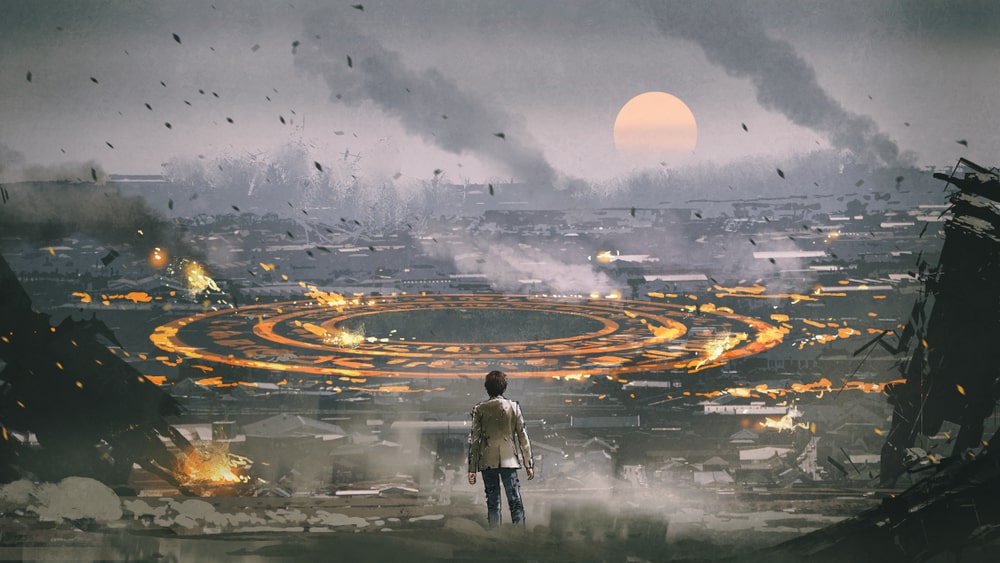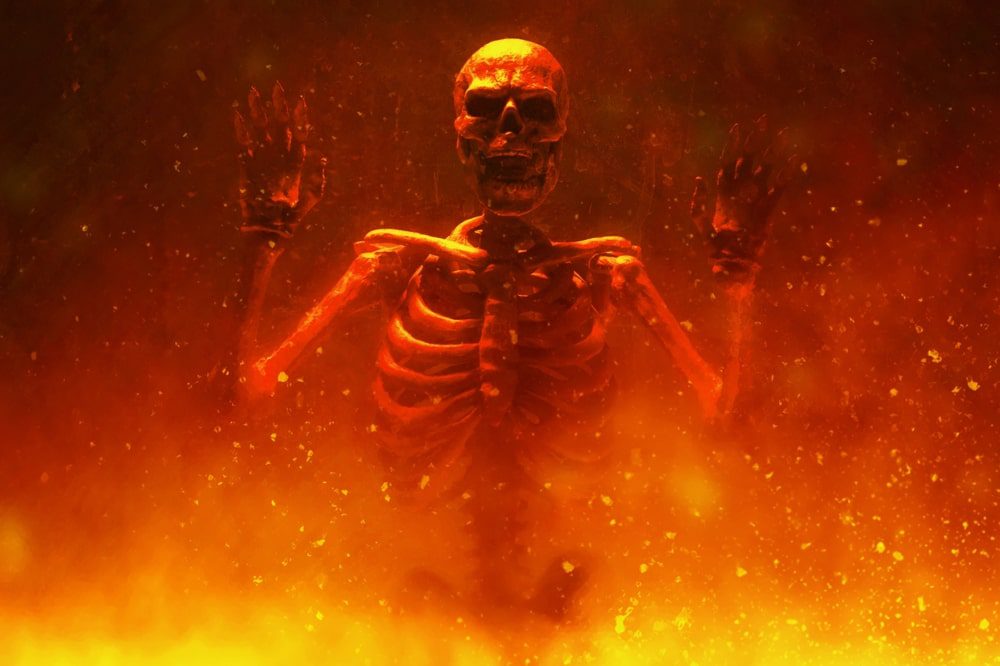How many of these Big Bang facts did you know?
The Big Bang is one of the most fascinating things about our Universe. It can be a little overwhelming when you stop to think about it! However charming it might seem, scientists and astronomers believe it to be the most possible way that our Universe as we know it began.
It’s believed that everything we see, from the Sun to the Stars to all those distant galaxies, was created by just one expansion. That is if you believe these Big Bang facts. If you ask a scientist where the Universe formed, “the Big Bang” is the number 1 answer you’ll likely get.
They’ll say that our Universe, which was separated by vast space, wasn’t born that way and wasn’t always around. Instead, it came to be this way because it grew and cooled from a hot, dense, matter-and-radiation-filled state with no stars, galaxies, or even atoms present at the beginning.
Everything in its current state today didn’t exist all those billions of years ago. And all of this was figured out in the past 100 years if you can believe it. But even with all this, there’s a slew of interesting facts most people don’t quite grasp about it.
From the Catholic priest who pioneered it to how we can, maybe, see it, here are 20 fascinating Big Bang facts you’ll want to know about.
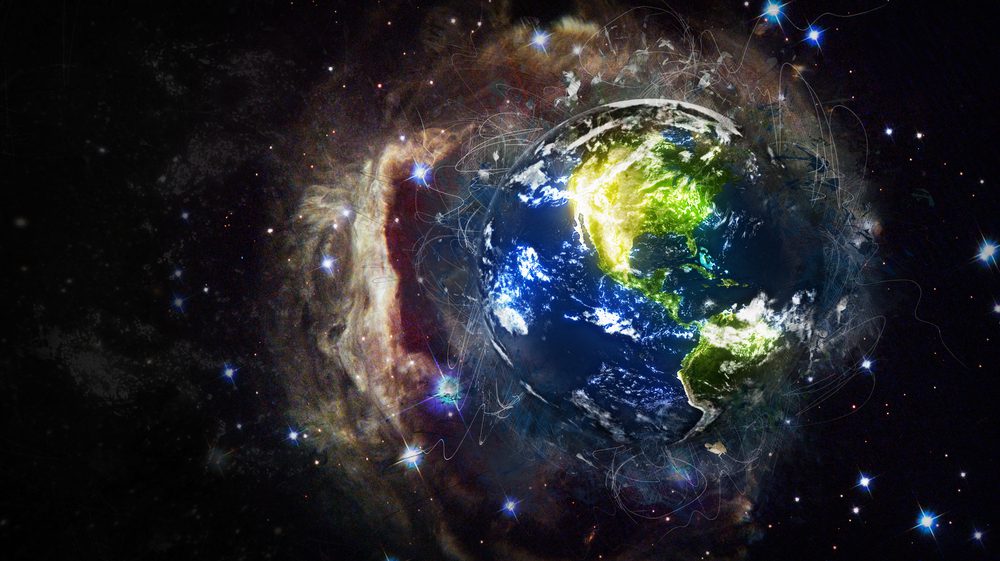
The Universe’s evolution
Even though it may be true that the galaxies and stars weren’t formed with the Big Bang, a Big Bang fact is that more movement happened in the few seconds after the Big Bang than the billions of years after it occurred. There were no galaxies, stars, or solar systems for many years.
Most of the universe was made up of dark matter. Even today, if we look at it, it still makes up a fair amount of the entire universe. The first stars were formed roughly 300 million years after the universe was made.
And it was 700 million years before the first galaxies were created. The solar system itself was developed 9 billion years after the universe began.
It’s not exactly a theory of creation
The Big Bang is a theory of the universe’s history, particularly its earliest junctures.
One thing we can say, with an intense degree of confidence based on numerous independent lines of evidence, is that our entire observable universe was once packed into a volume no bigger than a peach with a whopping temperature of over 1 trillion degrees.
A Big Bang fact, though, is where the universe actually came from.
Our existing understanding of physics can only take us so far into the past before all of our theories, including our knowledge of the workings of space and time, break down. In other words, we don’t know how the universe “started.” We only know what happened next.
It was formed…WHEN?
It wasn’t until about 9 billion years AFTER the Big Bang that the solar system was created. So a Big Bang fact is that our planet and Sun are fairly young compared to the entire universe.
The Big Bang itself doesn’t mean the beginning anymore.
It’s tempting to trace this hot, dense, expanding state back to a singularity. But there are many observations, led by the changes in the primeval fireball, that teach us there was a different state before that, where all the energy in the Universe was innate to space itself.
That space expanded at an exponential pace. This Big Bang fact was known as cosmic inflation. And scientists are still researching the details of that. Science progresses farther and farther back. But so far, there hasn’t been an end in sight.
A Catholic priest first thought of the idea
Albert Einstein publicized his theory of relativity in 1915, which initially stated that the Universe would naturally contract or expand. But he and most physicists and astronomers at the time believed that the Universe was static.
So he added some extra terms to the equations to balance things out. Years later, Edwin Hubble discovered that galaxies are, decreasing away from us, on average.
While astronomers resumed debating the importance of that observation, Belgian physicist and Roman Catholic priest Georges Lemaitre was the first to take both Hubble’s and Einstein’s findings at face value, arguing that we live in an expanding universe that used to be much smaller, hotter and denser than it is now. He dubbed this origin point the “primeval atom.”
It’s a Big Bang fact that Einstein first outright dismissed it as a possibility. His general theory of relativity was a revolutionary theory of gravity, presented in 1915 to build on Newton’s theory.
It predicted the orbital movement of Mercury to a precision that Newton’s theory couldn’t. It indicated the bending of starlight by mass, confirmed in 1919, and predicted the existence of gravitational waves.
But it also indicated that a Universe full of static and matter, or constant over time, would be unsafe.
In 1927, when the Belgian priest and scientist Georges Lemaitre came with the idea that the spacetime fabric of the Universe may be substantial and expanding, having appeared from a smaller, denser, more uniform state in the past, Einstein responded to this saying: “Vos calculs sont corrects, mais votre physique est abominable.”
This means “your calculations are correct, but your physics is horrendous!” An American scientist, George Gamow, who became obsessed with Lemaitre’s ideas, realized that if the Universe was expanding, the wavelength of the light in it was growing over time, and therefore the Universe was chilling.
If it’s cooling today, then it must have been hotter in the past. Deducing backward, he realized that there once was a period where it was too hot for neutral atoms to form and then a period before it was too hot for even atomic nuclei to form.
So, as the Universe grew and cooled, it must have formed the light elements and neutral atoms for the first time, resulting in a “primeval fireball,” or a cosmic background of cool radiation a few degrees above zero.
Everything from nothing
Another incomprehensible Big Bang fact regarding the universe is that it came from nothing. In physics, a singularity is an infinitely tiny space. Similarly, within this space exists infinite density and gravity. Gravity within a singularity is so grand that even light cannot escape.
As a result, pure darkness follows. Black holes are also believed to possess a singularity. The theory became prominent in the 1940s when it made startling predictions.
We can ALMOST see it
The cosmic microwave background is a tremendous deal. It cemented the Big Bang fact as the lone theory capable of explaining observational data and served as a window into our distant past.
When the universe was about a million times smaller than its size today, it had a temperature of over 17,000 degrees Fahrenheit and was in a plasma state. As it grew and cooled, that matter converted into a neutral gas as the first atoms were created.
This event released massive amounts of radiation, which remains in the cosmic microwave background today. The CMB is responsible for over 99.99% of all the radiation in the universe and was formed when the cosmos was about 380,000 years old.
Compared with its present-day age of 13.77 billion years, that’s the equivalent of a baby picture taken of a baby when he or she is 10 hours old.
Are we inside of a black hole?
Big Bang fact: As we’ve said, black holes also contain singularities. So, numerous current theories believe our universe is inside a black hole. Some views even provide a relatively concrete mathematical proof of such ideas.
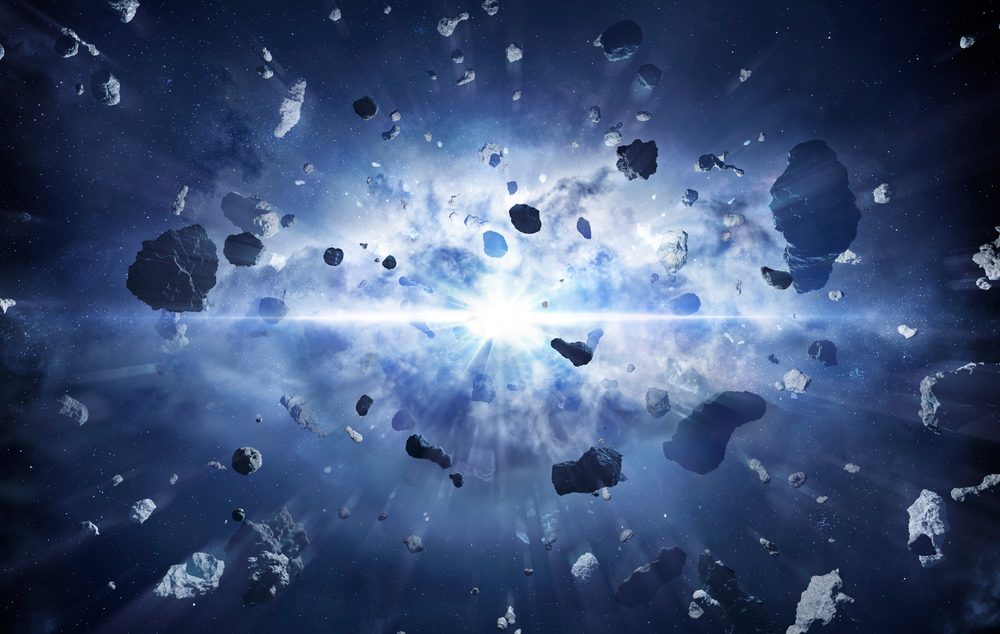
The name “Big Bang” came from the theory’s most fervent critic: Fred Hoyle
A Big Bang fact is that the the Steady-State Theory of the Universe was the most significant theory of the Universe from the 40s to the 60s, as the claim that most of the atoms came from stars that died.
Speaking to the BBC, Hoyle coined the term in a 1949 radio interview. He said: “An idea was that the Universe began its life a finite time ago in one huge explosion and that the current expansion is a relic of the violence of this event.
This big bang idea seemed to me to be unsatisfactory even before examination showed that it leads to serious difficulties.”
An accidental name
Oddly enough, Fred Hoyle first coined the term “Big Bang” as a farce. Initially, upon learning of the newly-formed theory of an expanding universe, he showed his disbelief and contempt by jokingly labeling it the “Big Bang Theory.”
Ultimately though, the title seemed to have caught on.
It was accidentally verified
Another Big Bang fact is that most physicists considered Lemaitre’s idea with suspicion, especially considering that his theory resembled the story of Genesis too much. But over the years, all other endeavors to explain Hubble’s result failed observational scrutiny.
Still, the “Big Bang” theory was regarded as an interesting, but not very likely, idea. In 1964, two radio engineers at Bell Labs were testing a new microwave receiver.
No matter how hard they tried, they couldn’t remove a stubborn background hiss they continually heard in the instrument. They even tried scrubbing all the pigeon poop off the receivers.
Searching for an explanation, they found a team of theoretical physicists looking for funding to create precisely what they had.
It turned out that the background hiss was due to radiation left over from when the universe transitioned from a hot, dense plasma to a less hot neutral gas. It’s called the cosmic microwave background and continues to be a cornerstone of our knowledge of the Big Bang.
Life before the big bang
Even though astronomy and science consider this big bang fact as the beginning and creation of everything, without light, humans aren’t able to see this moment.
So, many astronomers admit that more could have happened before the big bang. Whether we’ll ever see or know this remains to be seen.
It happened everywhere
One of the most fantastic things concerning the universe is that our standard conceptions of objects don’t apply. For instance, the universe has no edge and no outside because the concept of “the universe” expands to encapsulate everything in existence.
Likewise, another Big Bang fact is that it wasn’t an explosion in space. It was an explosion OF space. The Big Bang happened to everything in the universe simultaneously. It didn’t transpire in one particular location in space but in a specific AREA in time.
It’s hard to grasp, But that’s why we have mathematics: to help us wrestle with ideas we usually couldn’t.
The Hottest Time in History
Emerging within a singularity, the big bang was the greatest extreme. Simply put into a Big Bang fact, the entire universe was crammed into an infinitely tiny space. This gave way to infinite temperatures…literally.
Temperatures no numeric value can explain. The same applies to pressure, density, and most other universal measurements.
The 1964 discovery of the leftover glow was thought to be from bird poop at first
As we mentioned, scientists working at the Holmdel Horn in 1964 discovered a uniform radio signal coming from everywhere in the sky. Not recognizing it was the Big Bang’s leftover glow, they thought it was an issue with the antenna and tried to calibrate this “racket” away.
When that didn’t work, they entered the antenna and discovered pigeons’ nests! They cleaned the pigeons’ nests, but the sound wouldn’t disappear.
The realization that it was the discovery of Gamow’s prognosis vindicated the Big Bang model, embedding it as the scientific origin of our Universe.
Fun Big Bang Fact: Wilson and Penzias are the sole Nobel-winning scientists to clean up bird poop as part of their Nobel-worthy analysis.
The Big Bang helps us understand stars
Many researchers and scientists have used these Big Bang facts to help explain how planets and stars form and behave.
This is because the original proposition that things start dense and hot before exploding outwards can be applied to a near-endless collection of celestial bodies and stars in the general, unknown Universe.
The confirmation of the Big Bang gives us a precise history of the formation of galaxies, stars, and rocky planets.
If the Universe started hot, dense, and expanding then not only would we cool and create atomic nuclei and neutral atoms, but it would also take time for gravitation to draw objects into gravitationally collapsed structures. The first stars would take 50 to 100 million years to form.
The first galaxies wouldn’t develop for about 150 to 250 million years. And Milky Way-sized galaxies could take billions of years.
The first rocky planets wouldn’t even form until numerous generations of stars lived, burned through their fuel, and died in catastrophic supernovae explosions.
It might not be a coincidence that we’re monitoring the Universe now, 13.8 billion years after the Big Bang. This might be when the time is ripe for life on rocky worlds to emerge!
COULD this theory be the theory to end all theories?
Of all scientific theories about the beginning of the universe, the Big Bang theory is the most predominant and, therefore, the most prescribed. No matter what you believe, this is a Big Bang fact.
It’s to such an extent that some creationist believers say that the Big Bang could have been the creation of a higher power. But, it’s still just a theory because, obviously, there was no one around to grab any evidence or to corroborate the story for everyone else!
How the Universe began doesn’t tell us how it will end.
Another Big Bang fact is that there was a race between gravity, trying to re-collapse the expanding Universe, and the initial expansion, trying to force everything apart. But it doesn’t tell us what our fate is. That would take knowing what the Universe is constructed of.
With the existence of dark energy, uncovered just decades ago, we’ve learned that not only will the expansion win, but the most distant galaxies will continue speeding up in their recession from us. Our cold, empty fate is what we get in a dark energy Universe.
But if the Universe was born with just a bit more matter or radiation than we have today, our fate could’ve been much different!
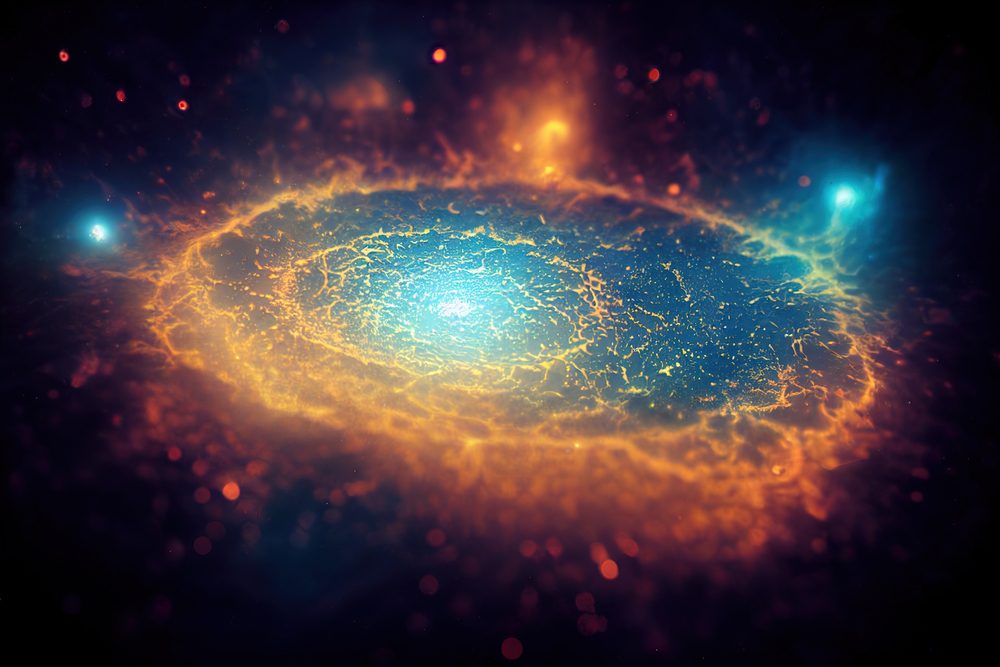
You Can Watch the actual Big Bang on TV…And we’re not talking about the Sitcom
Covering the sky, the Cosmic Microwave Background Radiation is the spare radiation from the big bang. Because the universe’s first radiation happened 380,000 years after the big bang, its thermal proof stayed frozen.
No matter which direction you follow, our human limits reach this wall of energy. Due to this Big Bang fact, when analog TVs flicker with static, a more miniature percentage is due to the CMB. But only about 1% is from the big bang. Nevertheless, it’s still pretty cool, right?
We came along many years AFTER the Big Bang
Oddly enough, a Big Bang fact is that the solar system came around much later than the event took place.
It’s believed that our system came into being about 9 billion years AFTER the Big Bang happened. So when you think about it, we’re actually newcomers to this game we call life!
To learn more about some compelling Big Bang facts, we highly recommend checking out this book from Amazon, penned by Fred Hoyle himself: The Intelligent Universe
Were you as fascinated as us regarding all these Big Bang facts? be sure to share your thoughts with us in the comments section.
And if you liked this post, we also recommend reading: 6 Most Popular Conspiracy Theories in History





